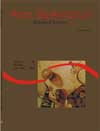<b>Microbiological analysis of <em>doces de leite</em> commercialized in free markets from Pelotas, Rio Grande do Sul State</b> - DOI: 10.4025/actascibiolsci.v31i2.676
Keywords:
contamination by bacteria, public health, food
Abstract
The consumption of homemade doce de leite, which is sold in street markets, is very common in the state of Rio Grande do Sul, Brazil. Generally, these products are not manufactured according to good hygiene guidelines, and may be a risk to consumers’ health. The aim of the present study was to analyze microbiologically samples of doce de leite commercialized in street markets in the city of Pelotas, Rio Grande do Sul State, according to the present legislation of Brazil’s National Health Surveillance Agency (Anvisa), and thus verify the sanitary conditions of this product. Samples of doce de leite were randomly acquired from street markets in Pelotas, Rio Grande do Sul State, Brazil. Among the 12 street markets registered in the Pelotas City Council, doce de leite samples were found in only five. The microbiological analyses were carried out according to document RDC n° 12 (Jan. 12, 2001) from Brazil’s National Health Surveillance Agency (Anvisa). Based on the methodologies employed, no microbial pathogen isolates were detected in the investigated samples of doce de leite. According to the criteria established by document RDC n° 12, it was concluded that none of the doce de leite samples revealed pathogenic bacterial contamination.Downloads
Download data is not yet available.
Published
2009-05-14
How to Cite
Destri, K., Bairros, J., Vargas, B. L., Nascente, P. da S., Del Pino, F. A. B., & Lund, R. G. (2009). <b>Microbiological analysis of <em>doces de leite</em> commercialized in free markets from Pelotas, Rio Grande do Sul State</b> - DOI: 10.4025/actascibiolsci.v31i2.676. Acta Scientiarum. Biological Sciences, 31(2), 153-157. https://doi.org/10.4025/actascibiolsci.v31i2.676
Issue
Section
Microbiology
DECLARATION OF ORIGINALITY AND COPYRIGHTS
I Declare that current article is original and has not been submitted for publication, in part or in whole, to any other national or international journal.
The copyrights belong exclusively to the authors. Published content is licensed under Creative Commons Attribution 4.0 (CC BY 4.0) guidelines, which allows sharing (copy and distribution of the material in any medium or format) and adaptation (remix, transform, and build upon the material) for any purpose, even commercially, under the terms of attribution.
Read this link for further information on how to use CC BY 4.0 properly.
0.6
2019CiteScore
31st percentile
Powered by 

0.6
2019CiteScore
31st percentile
Powered by 











1.png)




3.png)













